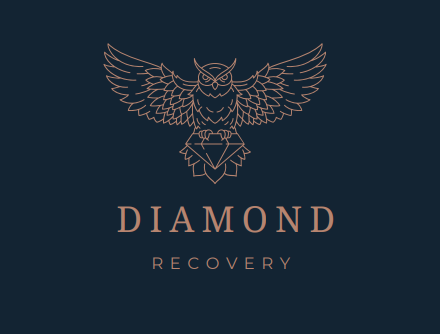Art has been a powerful form of self-expression for thousands of years, capable of capturing emotions and experiences that words often cannot. For addiction recovery, art therapy has emerged as an innovative and effective approach to healing, offering people a creative way to process their struggles and rediscover themselves. This article will explore art therapy, tracing its origins and looking at its evolution into a science-based therapeutic tool. By understanding how art therapy works and supports emotional and psychological healing, we will show why it has become an invaluable resource in modern addiction treatment. Through its unique ability to connect creativity with recovery, art therapy helps individuals work through the challenges of addiction, heal, and create a healthier future.
What is Art Therapy?
Art therapy is a creative approach to improving mental health and emotional well-being using artistic expressions.
Different forms of art, such as drawing, painting, and sculpting, are used in art therapy to help an individual communicate an emotion that may be difficult to express verbally.
Art therapy supports emotional expression and coping by providing a nonverbal outlet to explore and process complex emotions, trauma, or stress.
Through creative activities, individuals can safely confront their feelings, develop healthier coping mechanisms, and gain a sense of empowerment and self-awareness.
The History of Art Therapy
Art therapy has roots within ancient civilizations that used art in some of their healing practices.
Ancient Egyptians, for example, would incorporate visual art, music, and ritualistic dance into ceremonies designed to restore balance and harmony, which they associated with physical and emotional well-being.
Another example of art therapy in ancient civilizations comes from the Greeks. They believed music, poetry, and visual arts could restore harmony between the body and mind.
In the early 20th century, art therapy began to be incorporated into formal therapy sessions.
After World War II, art therapy was formally recognized to treat the surge of mental health challenges, including anxiety, depression, and trauma, for which traditional verbal therapies alone were often insufficient.
In 1969, the American Art Therapy Association was formed, and by the 1970s, art therapy programs began to emerge across the nation that provided education and training for therapists.
With this evolution in training and the implementation of art therapy into treatments, more research was gathered demonstrating its effectiveness.
During the 1970s, art therapy became widely recognized as a legitimate treatment and began to be included in hospitals, rehabilitation centers, and addiction treatment programs.
The Science Behind Art Therapy
Creative expression activates several regions of the brain, including those responsible for emotion, memory, and problem-solving. This connection helps individuals process complex emotions and develop healthier coping mechanisms, making it particularly effective in addiction recovery treatment.
Art therapy helps to reduce stress, improve emotional regulation, and enhance self-awareness by providing a safe outlet for emotions, promoting mindfulness, and encouraging personal insight.
Creating art stimulates the brain’s reward system by activating the areas responsible for pleasure and motivation, such as the dopamine-producing regions. This system promotes feelings of satisfaction and a feeling of accomplishment.
Art therapy can help to rewire thought patterns and emotional responses, helping to break negative cycles and promote healthier cognitive and emotional patterns.
Scientific studies show that art therapy can significantly reduce the symptoms of depression and anxiety in individuals going through addiction recovery. Study participants also reported improved emotional expression and coping mechanisms after participating in programs that utilize art therapy.
Art Therapy in Modern Addiction Recovery
Initially, art therapy was first incorporated into inpatient settings, particularly psychiatric hospitals. It was not until later that art therapy was incorporated into outpatient treatment as its effectiveness in mental health and addiction issues became more widely recognized.
Art therapy complements traditional therapies in addiction treatment by offering a nonverbal outlet for emotional expression, allowing individuals to explore their feelings and experiences in a way that words alone may not facilitate. This creative approach can help bridge the gap between the person in treatment and others when words don’t come easily.
In addiction treatment, art therapy builds self-esteem and provides a sense of accomplishment. By allowing an individual to create a tangible expression of their emotion, art therapy helps them feel empowered and proud of their progress and creative abilities.
Art therapy helps in developing a present-focused, nonverbal approach to expressing emotions, which helps individuals relax, increase self-awareness, and manage difficult feelings, all of which promote mindfulness and stress management.
The Importance of Creativity in Recovery
Finding an Ogden outpatient drug and alcohol treatment program that offers art therapy will help reframe a person’s identity, provide a safe place to express their feelings in a nonverbal way, and develop essential tools for a successful recovery.
Personal insight, cognitive rewiring, mindfulness and focus, improved self-esteem, and emotional regulation are all benefits of participating in art therapy during outpatient drug and alcohol treatment.
Art therapy in addiction treatment provides an opportunity to share and connect with others in recovery.
There is no doubt that art therapy offers a powerful and transformative approach to addiction recovery by combining creativity with science to support emotional expression, personal growth, and healing. From its ancient roots to its development as a formal therapeutic practice, art therapy has proven itself as an invaluable tool for individuals on the path to recovery. Encouraging self-expression, mindfulness, and emotional regulation, art therapy helps individuals reframe their identities, build self-esteem, and gain deeper insight into their emotional challenges. As we continue to recognize the importance of creative outlets in healing, art therapy remains an important resource for those seeking recovery and a healthier future.

















